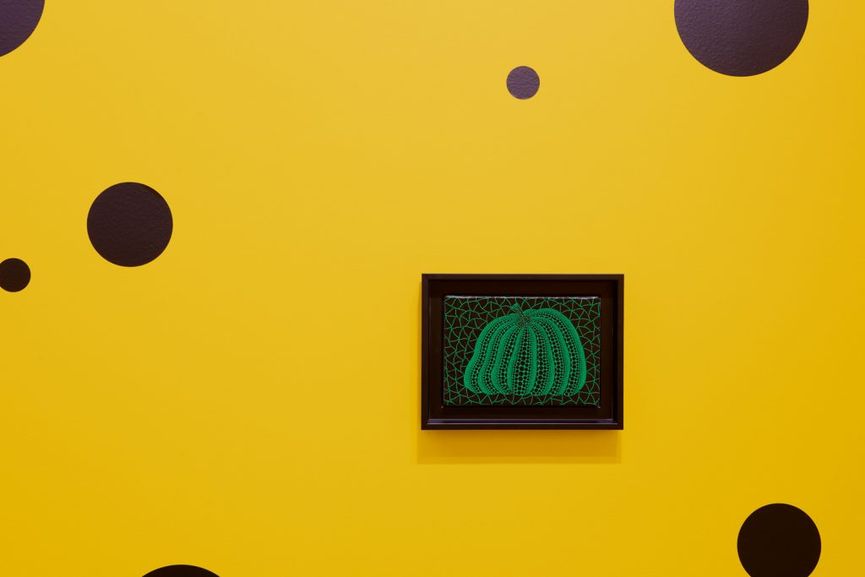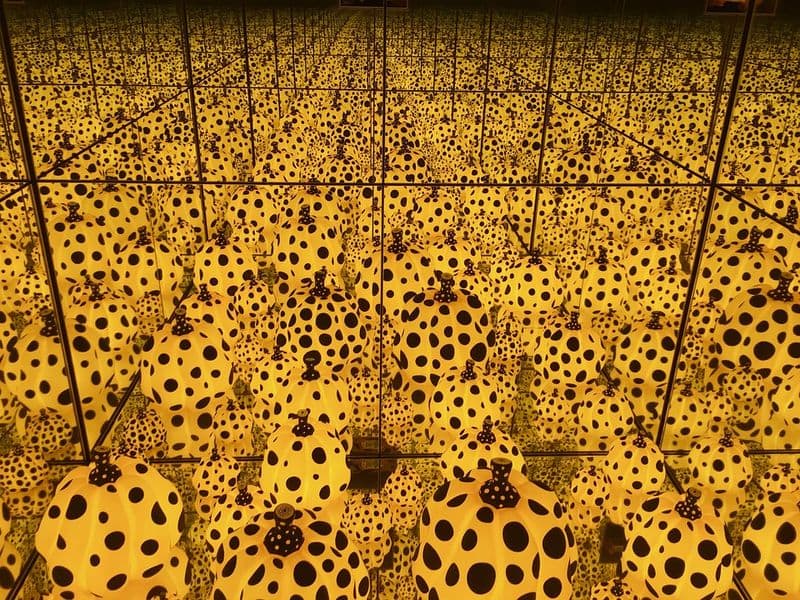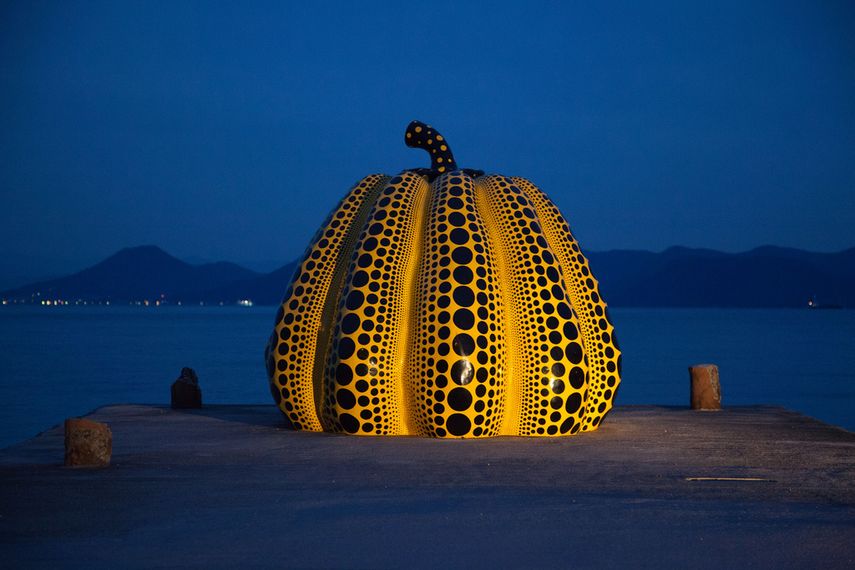[ad_1]
Whatever their size, the Yayoi Kusama pumpkin works are instantly recognizable. Aside from her equally recognizable polka dots, pumpkins have been a passion of the artist for more than six decades.
Over the course of her prolific career, Kusama has developed a practice that shares affiliations with many contemporary movements, but resist any singular classification. Struggling with mental illness ever since she was a child, she preserved by using her hallucinations and personal obsessions as an outlet for prolific artistic output in various disciplines. Employing her art practice as a unique survival mechanism, she used it to process her hallucinations, confront personal phobias and make sense of the world around her.
Standing as a real leader in both avant-garde and post avant-garde movements, she established a trademark out of repeating motifs and psychedelic colors that imply on the themes of feminism, obsession, sex, aggression, psychology and powerful self-reflection.
The current exhibition at Omer Tiroche Gallery brings together Yayoi Kusama’s small-scale pumpkin paintings. Kicking off their 2018 program, Small Pumpkin Paintings will showcase this small body of work together for the first time in the United Kingdom.

A Charming and Unpretentious Motif
Growing up in Matsumoto, Nagano, Yayoi Kusama first started drawing pumpkins in the 1940s while studying Nihonga – a traditional form of Japanese painting – at the Kyoto School of Arts and Crafts. Growing up in a plant seed nursery, she was first introduced to a pumpkin by her grandfather, immediately taking to it because of its shape and its grotesqueness.
The first time I ever saw a pumpkin was when I was in elementary school and went with my grandfather to visit a big seed-harvesting ground… It immediately began speaking to me in a most animated manner. It seems that pumpkins do not inspire much respect, but I was enchanted by their charming and winsome form. What appealed to me most was the pumpkin’s generous unpretentiousness.
This was a beginning of a life-long obsession with a fruit she so closely linked to her identity. Describing the pumpkin motif as an alter ego, she emphasized how her work and identity were intrinsically intertwined.
Yayoi Kusama reading her poem ‘On Pumpkins’
A Form of Self-Portraiture
A recurring motif in Yayoi Kusama’s work, and her best-loved and most iconic, the pumpkin represents a source of radiant energy for her. Both endearing and grotesque, the giant gourds represent a visual embodiment of her childhood as well as her present psychological state, remaining with her throughout her career.
Pumpkins bring about poetic peace in my mind. Pumpkins talk to me.
Viewing the plant as both humble and amusing, this whimsical vegetable has so much autobiographical significance to the artist, coming to represent her alternative self-portrait. The pumpkin paintings serve as magnifying mirrors in which to “confront the spirit of the pumpkin, forgetting everything else and concentrating [her] mind entirely on the form before [her].” Seen from up-close, these paintings embody motifs that she has revisited throughout her career – the obsession, dots and infinity nets.
Portraying a Japanese Kabocha squash, Kusama’s plant continues to grow and ripen even though it is disconnected from the earth. Combining the flatness of infinity net backgrounds with the 3D optical illusion of the polka-dot patterns, these pumpkins perfectly illustrate the artist’s conflicted world, in which she is at the same time imprisoned by reality and locked out of it.

Pumpkin Works
The first Kusama’s mirror pumpkin room was presented at 1993 Venice Biennale when she created a room filled with small pumpkins in which she sat in color-coordinated magician’s attire. From this moment, her obsessive use of the motif intensified, in an attempt to control her fears with repetition.
Throughout her career, the motif has been revisited over and over in her paintings, sculptures, and installations. In 1994, she created the gigantic Pumpkin sculpture, as her first foray into outdoor sculpture. Created specifically for the Benesse Art Site on Naoshima Island in Japan, the piece has become a true icon of the island. Painted with rows of black dots fanning out from large to small around the gourd, the yellow pumpkin sculpture has a cartoonish appearance for its bulbous, organic form and grand scale. This work was a shift from her earlier politically charged works – a shift often attributed to the transition in Japanese culture from rigid to ridiculous and tacky.
The 2016 installation All the Eternal Love I Have for the Pumpkins was the first mirror pumpkin room the artist created since 1993. A room covered entirely in mirrors was filled with glowing, yellow and black plastic pumpkins, appearing to stretch on forever and fully immersing the viewer in the artist’s creation.
At the end of February this year, her sculpture titled Pumpkin Large was installed in the John and Mary Pappajohn Sculpture Park in Des Moines. Eight feet from ground to stem, including a 3-foot pedestal, the piece is made from bronze and features a repetitive dot pattern across its surface.

Yayoi Kusama Pumpkin Paintings at Omer Tiroche Gallery
Bringing together these small-scale pivotal works in one gallery space for the first time, this important exhibition at Omer Tiroche Gallery will allow their closer study. As Omer Tiroche explains, they are thrilled to be able to present this collection of intimately sized works all together in one space. “These small objects are so individually beautiful and we are very excited to be able to offer them for sale,” he adds.
The exhibition Yayoi Kusama Pumpkin Paintings will be on view at Omer Tiroche Gallery in London until June 1st, 2018.
Featured images: Small Pumpkin Paintings by Yayoi Kusama, the installation view at Omer Tiroche Gallery. Courtesy of Omer Tiroche Gallery.
[ad_2]
Source link
